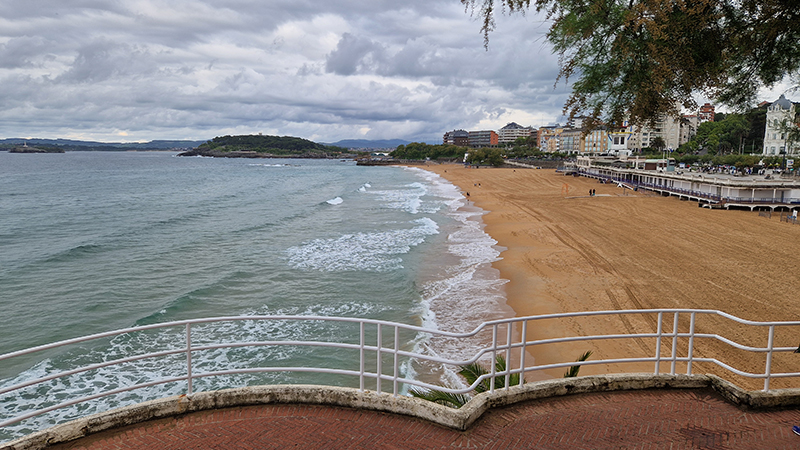IHCantabria research advances knowledge of coastal wave systems worldwide
The study results highlight the complexity and variability of wave systems in different coastal regions and provide essential insights for improving coastal engineering and management practices
A study led by staff of the Marine Climate and Climate Change research group of the Institute of Environmental Hydraulics of the University of Cantabria (IHCantabria), provides an unprecedented analysis of coastal wave systems worldwide. Their results have been recently published in the scientific journal
Frontiers in Marine Science.
“Better understanding the climatic behavior of the swell associated with the groundswell (remotely generated swell) is of interest for various activities, such as maritime navigation or the interaction of the swell with the coastal zone. In particular, determining coastal wave systems is crucial to predict and mitigate the impacts of wave-induced forces on coastal protection structures and sandy sediments”, says Melisa Menéndez García, head of the Marine Climate and Climate Change group at IHCantabria and co-author of the paper entitled “A worldwide coastal analysis of the climate wave systems”.
The climatic systems or wave families “are predominant long-term wave behaviors, which are defined by presenting energy for groups of waves with a given range of periods and directions, and which have similar physical attributes (such as generation area, period and wave height),” explains the first author of the aforementioned paper, Ottavio Mattia Mazzaretto.
The study referred to in this article analyzes more than three decades of historical hourly data at more than 10,000 coastal locations to understand the climatic conditions that may affect coastal areas around the world. These results reveal that, on 70% of global coasts, groundswell coexists with wind sea. In addition, coastal areas (25% of the global coastline) have been identified in which the bottom sea dominates exclusively, while the wind sea is dominant only in the remaining 5%, particularly in semi-enclosed seas, such as the Baltic Sea or the Gulf of Carpentaria (Australia).
In this study, an analytical method was developed, which starts by analyzing the hourly wave energy ─for a range of periods and directions─ and grouping this energy into packets called spectral partitions, and then separating local waves (wind swells) from remotely generated waves (ground swells). These results were then analyzed over the entire available historical period to determine the wave systems or families.
“Of particular interest are the results in which different bottom wave systems are determined. For example, approximately 50% of coastal locations exhibit three or four significant swell systems, and only 2% of the world’s coastline is affected by a single swell system over time,” says Ottavio Mazzaretto, who analyzed aspects such as this in his doctoral thesis, which he will defend on July 19, at 11:00, in the auditorium of IHCantabria. As he explains, there are coastal areas that have a high number of different wave systems, such as the coasts of the Pacific islands or some coastal stretches in the Mediterranean, which represent approximately 30% of the global coastal locations.
Regional highlights and practical applications
The study shows how the European Atlantic coast, more exposed to the open ocean, from Scotland to Portugal, is dominated by two swell systems. Some coastal regions ─such as Japan, South Africa, and the east coast of Australia─ exhibit three or four swell systems. On the other hand, certain Atlantic coastlines in Africa, especially the Gulf of Angola region, receive only one swell system. The west coast of Mexico and parts of Indonesia are characterized by the presence of more than four of these swell systems.
The findings of this study may have important implications for coastal engineering, both in the design of coastal or marine defense structures, as well as to advance in the characterization of the operability of ports, or in the evaluation of coastal erosion. Understanding the climatic behavior of wave systems is crucial to accurately predict and mitigate the impacts of wave-induced forces on coastal structures and areas. The synthesized information of this study can be accessed through the freely available interactive web viewe Wave Systems Viewer. This tool allows users to visualize the most important characteristics of wave systems on a global scale and provides specific information for each of the different coastal locations studied.
The content of the scientific article can be accessed through this link.

First beach of El Sardinero at sunset. Understanding the climatic behavior of wave systems is crucial to accurately predict and mitigate the impacts of wave-induced forces on coastal structures and areas



